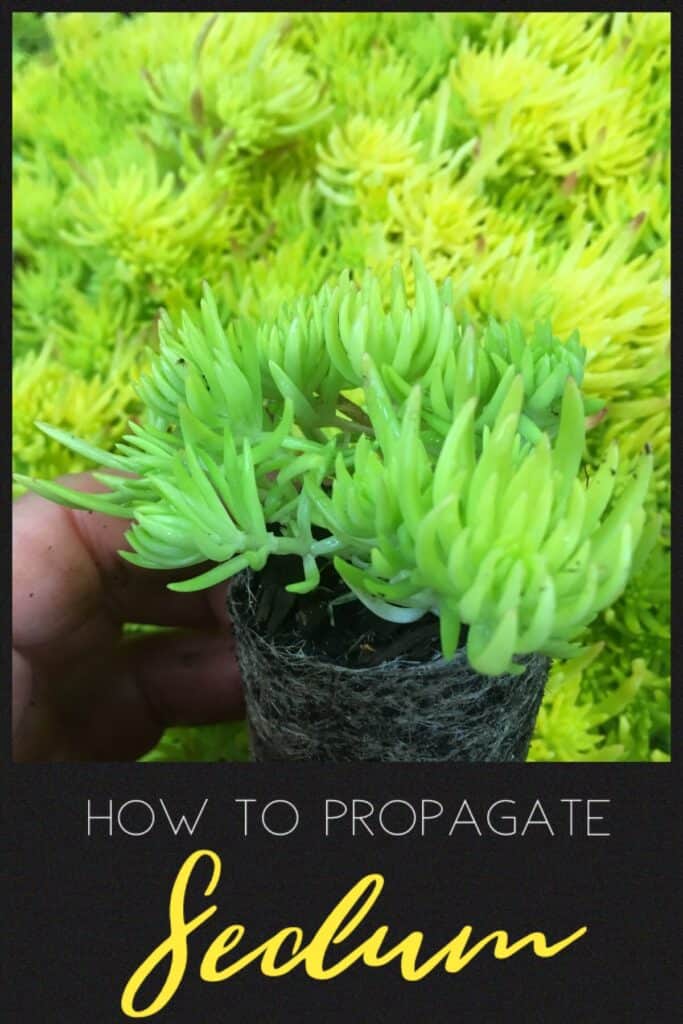
How to propagate Sedum mexicanum
This article shows how we propagate sedum (stonecrop) mexicanum “gold mound”. This may very well be the easiest plant we’ve ever propagated!
We took these cuttings in late summer and one month later the roots were well established and the plants had tripled in size.
Success rate was 100% and this wasn’t a small sample size! We took 420 cuttings and got 420 viable plants, that is almost unheard of for us!
Find a healthy plant
When taking cuttings always use a healthy, disease and pest free plant. A cutting is a clone of the parent plant so the more robust, healthy and vibrant the plant, the same should apply to it’s offspring.
We used tip cuttings. Simply cut a piece of stem 5cm (2″) from the tip of the stem.
Normally when we take cuttings we would strip the lower 1/2 of the cutting of it’s foliage. These are a little fragile and will break apart easy, plus they are so fast growing and so easy to propagate that it is not necessary.
The pictures below illustrate how easy the cuttings are to harvest. You don’t even need secateurs, they can simply be pinched off with your fingers.
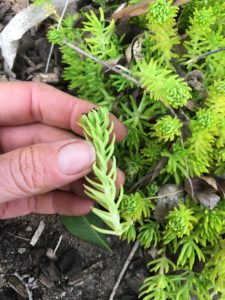
Sedum mexicanum tip cutting
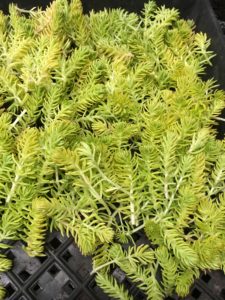
Sedum cuttings
Striking Roots
Usually we place our cuttings into a perlite and peat moss mix to strike roots. Then once the roots have developed we transplant into small pots with good quality potting mix. This is unnecessary with sedum mexicanum.
Instead we filled a small pot with good quality potting mix, created a small hole and inserted the cutting. So easy!
Once the cuttings are in the small pots they will need to be watered. Even though sedum is a succulent, they still require moisture. We give a thorough soaking on the first water and then just keep the the potting mix moist until roots develop. The first watering will benefit with the addition of seasol, just to elimenate any transplant shock and encourage strong root growth.
We stored our cuttings in a shaded area out of direct sunlight, but still outside. Usually we would shelter cuttings from the elements (ie. wind, temperature extremes) but these are so tough that it just isn’necessary.
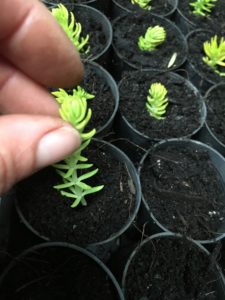
Sedum cuttings into potting mix
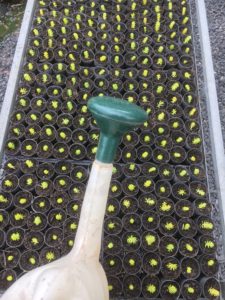
Watering sedum cuttings
Plant into garden
One month after taking the cuttings and putting them into the small pots they had a great root system and had tripled in size!
Once the roots are developed they can be planted into your desired location, sold or given to friends and family.
Remember these cuttings were taken in late summer and the temperatures were very warm. We are currently trialling another batch taken in early spring. I expect them to take slightly longer, but hopefully with a similar success rate.
Below is a short little video showing some of the above steps. We hope this has been helpful and you are able propagate your own sedums. It’s just worth mentioning that some sedum varieties are currently ‘PBR’, which means they are unable to be reproduced for the purpose of selling, without special permission. Fines do apply, so please be mindful and always read your label.
If this article has been helpful please subscribe to our mailing list where we share other helpful content. Happy planting:)
Propagation Kit
We have also put together a resource page that contains links to the products we use or similar. If you want to check that out click the link.
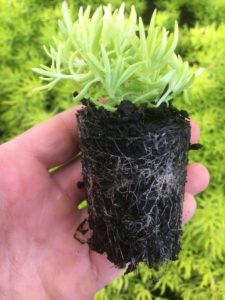
Video how to propagate Sedum mexicanum “Gold mound”
CLICK HERE TO SEE OTHER PLANTS WE PROPAGATE
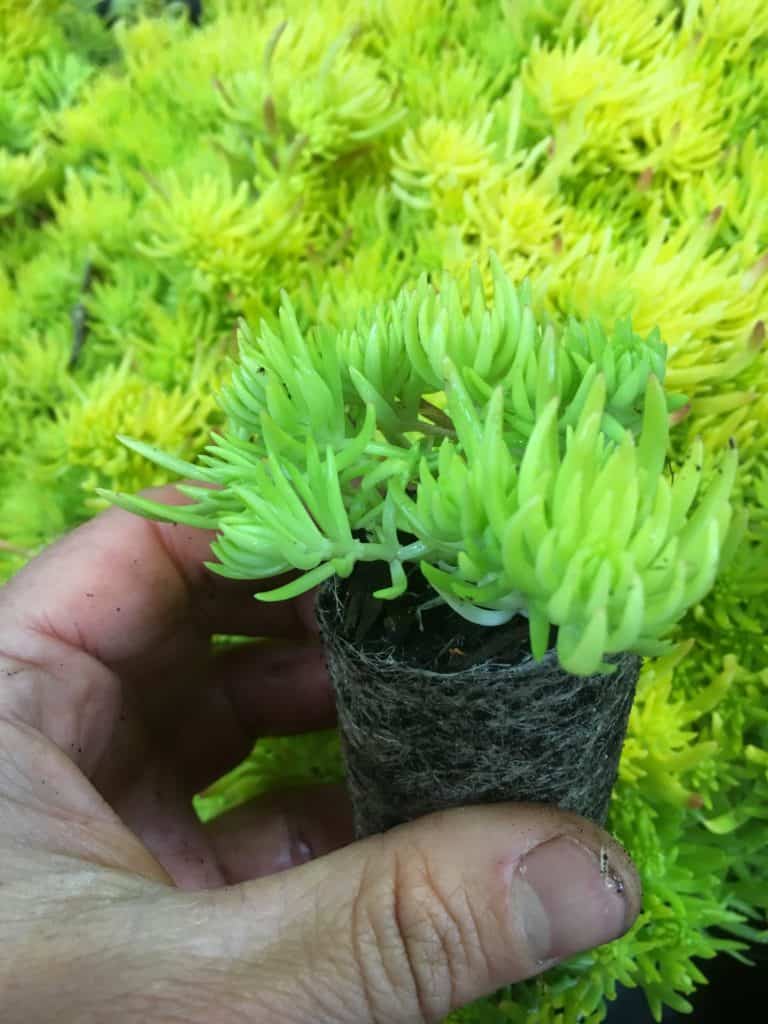
Sedum mexicanum “gold mound” Information & Care
Sedum “gold mound” is a small growing, succulent ground cover. The foliage is a striking lime/yellow.
The leaves are small and fleshy. In summer it produces small yellow flowers.
“Gold mound” is a great choice as a ground cover in hot dry area’s. Cascading out of a hanging basket, patio pots, or spilling over retaining walls. Makes a great addition to any succulent garden.
Prefers to be grown in well draining soil, in a full sun position. However, we have ours in part shade and it is thriving!
Will benefit from extra water during periods of extended dryness. Can be pruned hard if needed.
A great little hardy plant!
Cultural information
Botanical name: Sedum mexicanum
Common name: Stonecrop, Mexican stonecrop
Family: Crassulaceae
Native to: South America
Flowers: Spring/Summer
Position: Full sun/Part shade
Height: 15cm
Width: 150cm

